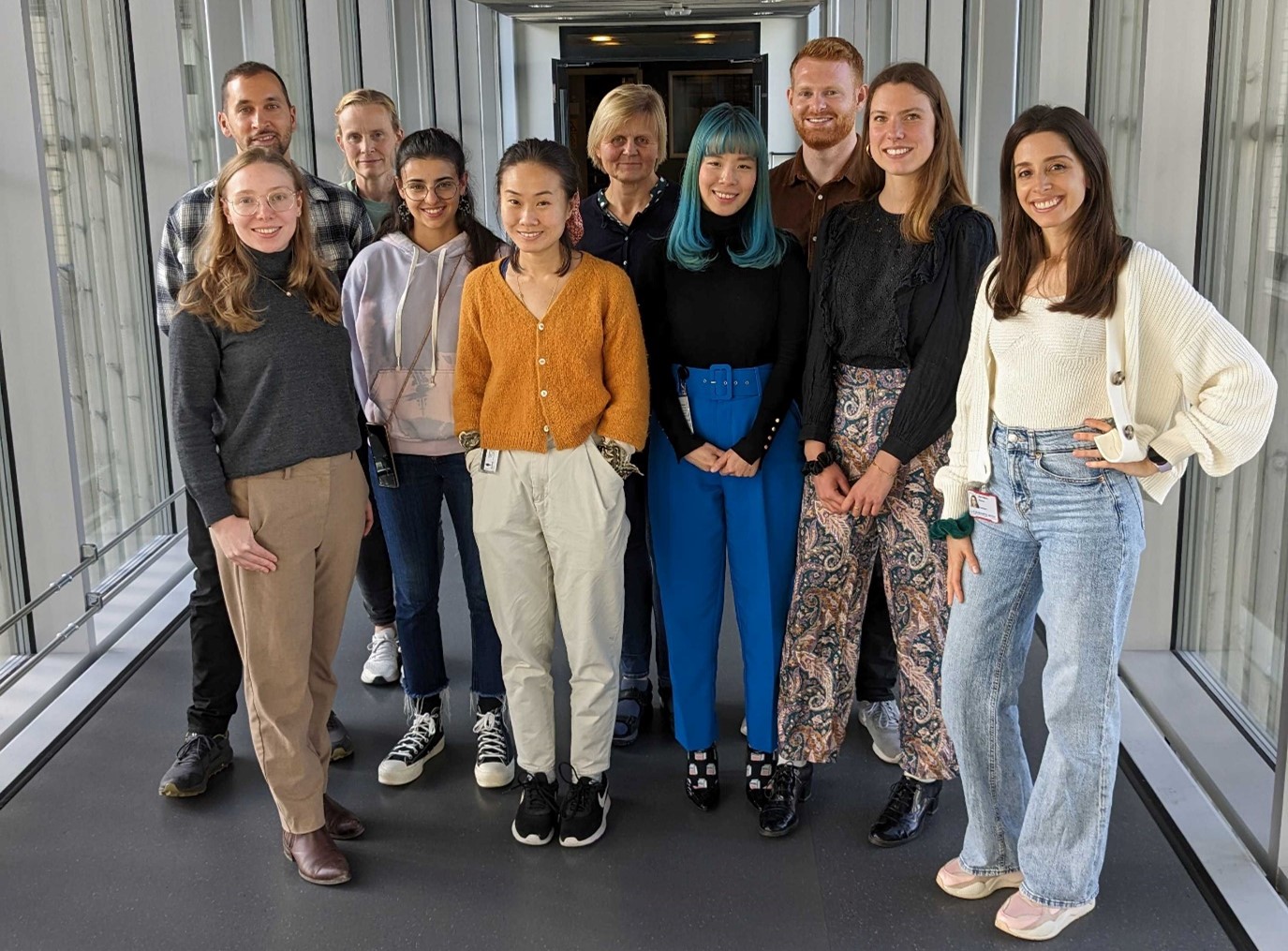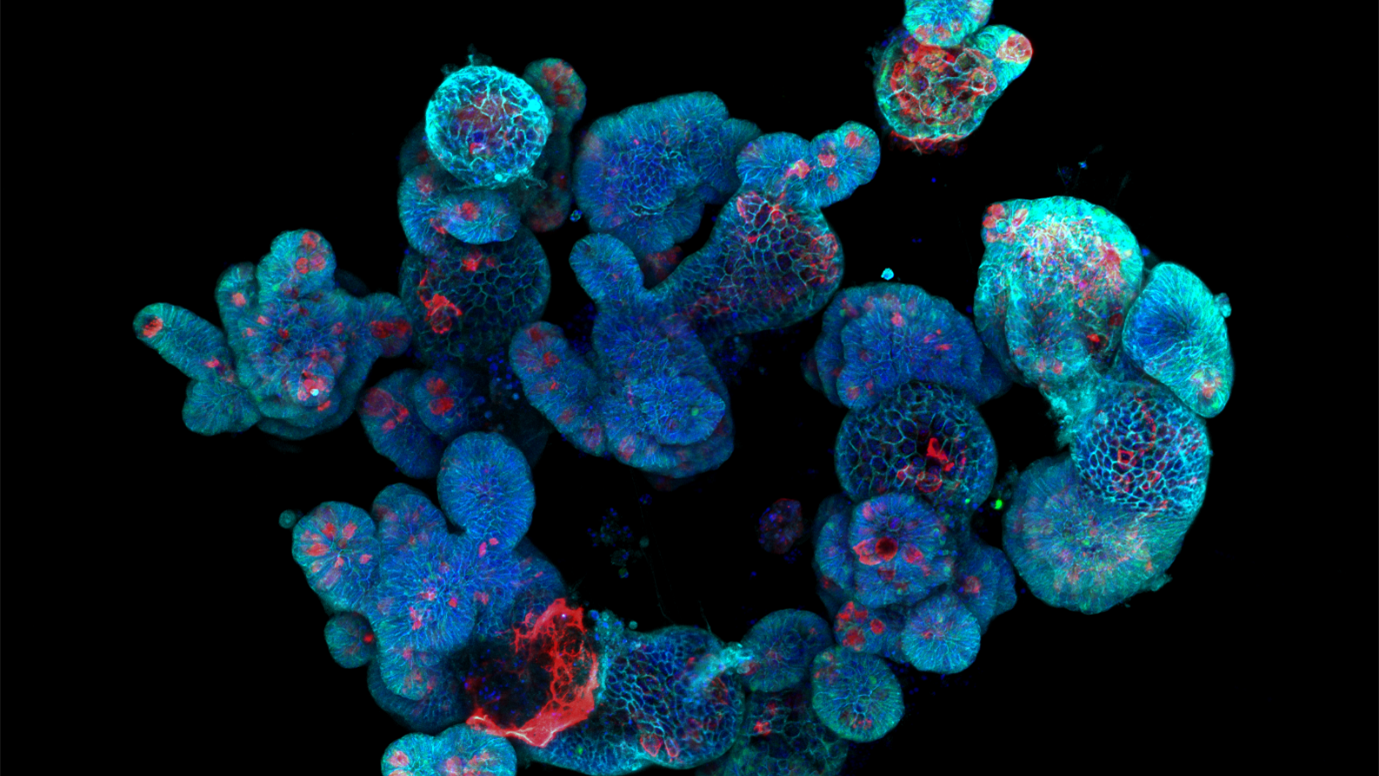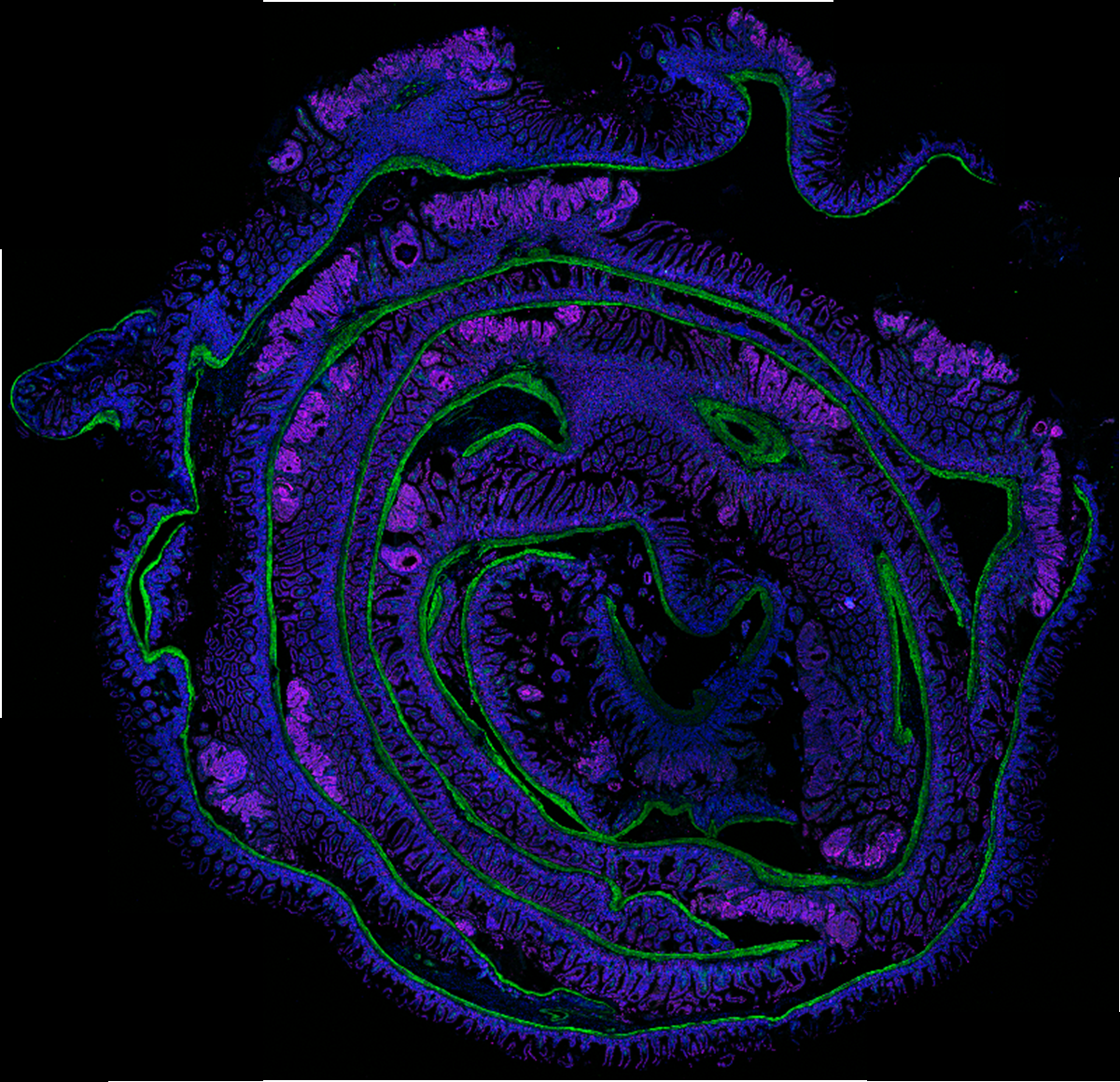The Research Group on Cellular and Molecular Mechanisms in Regeneration, CEMIR at the Department of Clinical and Molecular Medicine
Cellular and Molecular Mechanisms in Regeneration

Reparative processes are an important part of recovery after insults. These insults can be caused by mechanical damage, inflammation, and infection.
Appropriate repair is necessary to avoid development of chronic inflammatory or infectious diseases, and even cancer.
We study cell-intrinsic and cell-cell communication mechanisms by which reparative and immune responses collaboratively ensure tissue protection. We use both in vivo and in vitro (organoid co-cultures) models of disease (inflammation, infection, cancer). We use CEMIR’s impressive imaging infrastructure to develop automated image analysis tools for organoids and tissue sections. We combine these imaging techniques with next generation sequencing to measure changes in microbiome, gene expression, and chromatin state.
We mainly study mucosal sites, as they are one of the prime interfaces between ‘in’ and ‘out’, and thus common sites for inflammation or infection. For example, we study how factors (cytokines) that are derived from immune cells induce an effector response in the intestinal epithelium. We are really interested also in how non-immune cells, such as smooth muscle cells, contribute to tissue repair and immunity by secreting so-called ‘niche’ factors.
We combine several in vivo murine tumorigenesis models with in vitro organoid cultures to study cancer initiation in the intestine (see figure for examples). We are interested in how tumor development and metastasis is orchestrated by the surrounding niche.
The Martin-Alonso’s lab currently has two research lines related to colorectal cancer (CRC, Tissue repair and regeneration in colorectal cancer - CRC - Department of Clinical and Molecular Medicine - NTNU). The first is about how epigenetic modifiers, the enzymes responsible for curating the epigenome, contribute to CRC formation and development. Epigenetic modifiers are attractive drug targets and we have a small library of probes that we use in vitro to support our in vivo work.
The second research line is about how intestinal smooth muscle provides niche factors, such as BMP agonists and antagonists, to control (cancer) stem cells and metastasis. The smooth muscle is an understudied part of the intestinal system, but it produces numerous niche factors that may play a role in tumor formation and metastasis.
Join us
The Martin-Alonso Lab started in early 2016 and we’re always looking for enthusiastic and ambitious new people at all levels (undergrad, MSc, PhD, postdoc). Please send Mara Martin Alonso an email if you are interested in joining us. Email: mara.m.alonso@ntnu.no.
Collaborators
- Maarten Altelaar, Utrecht University, The Nederlands
- Cheryl Arrowsmith, SGC, University of Toronto, Canada
- Kathryn Else, University of Manchester, UK
- William Horsnell, University of Cape Town, South Africa
- Rick Maizels, University of Glagow, UK
- David Underhill, Cedars Sinai, USA
- Toshiro Sato, Keio University, Japan
- Alicia G. Arroyo, CIB, Madrid, Spain
- Pekka Katajisto, Helsinki University, Helsinki, Finland

Image source: Alberto Diez-Sanchez

Figure (right): Example image of intestinal tissue from Lgr5-CreERT2 Apcf/f mice in which CTNNB1 (purple) and LGR5 (green) is induced upon tumorigenesis and smooth muscle (red) undergoes remodelling.
Images: Menno Oudhoff and Alberto Díez-Sanchez

Image source: Mara Martin-Alonso.
